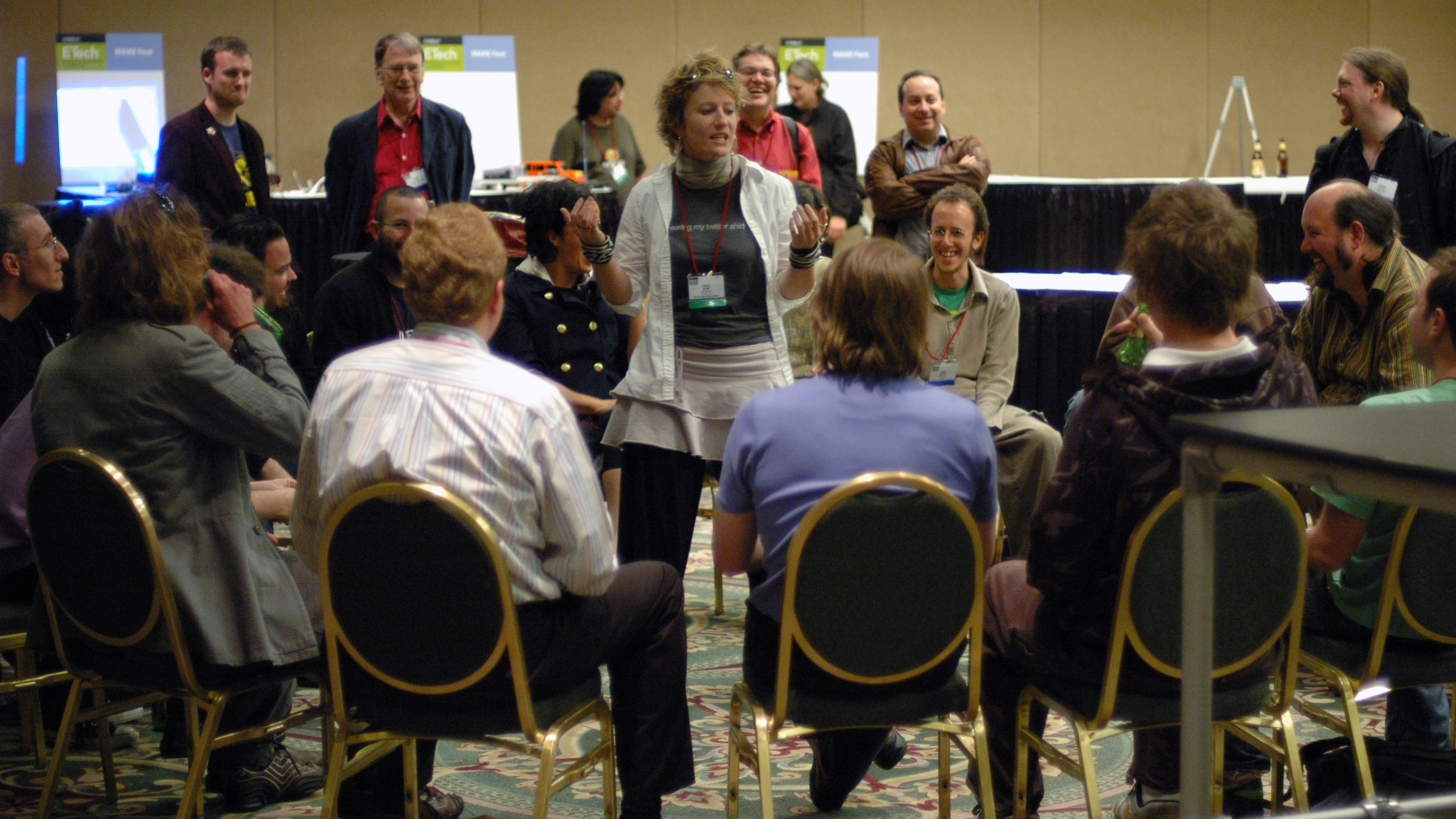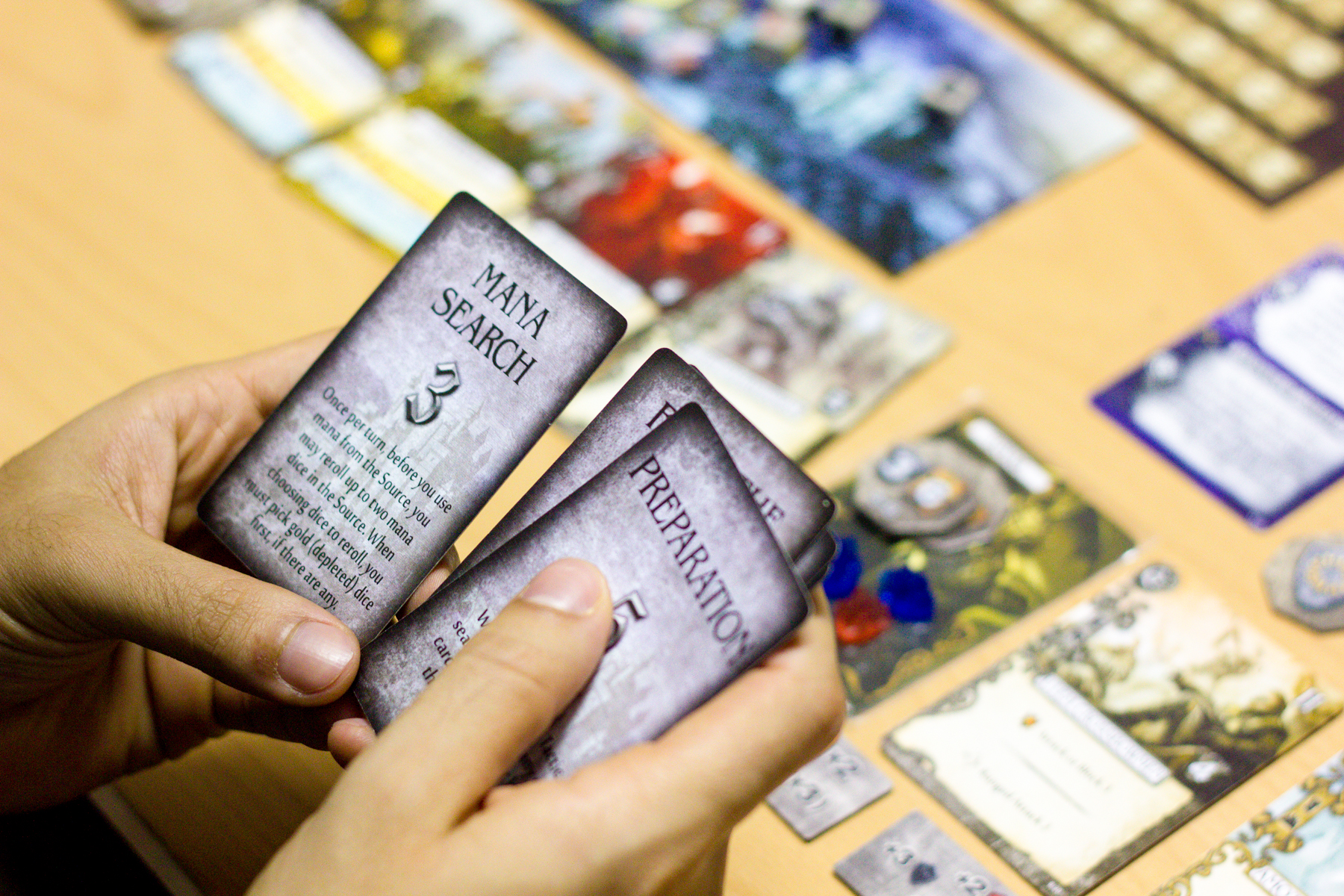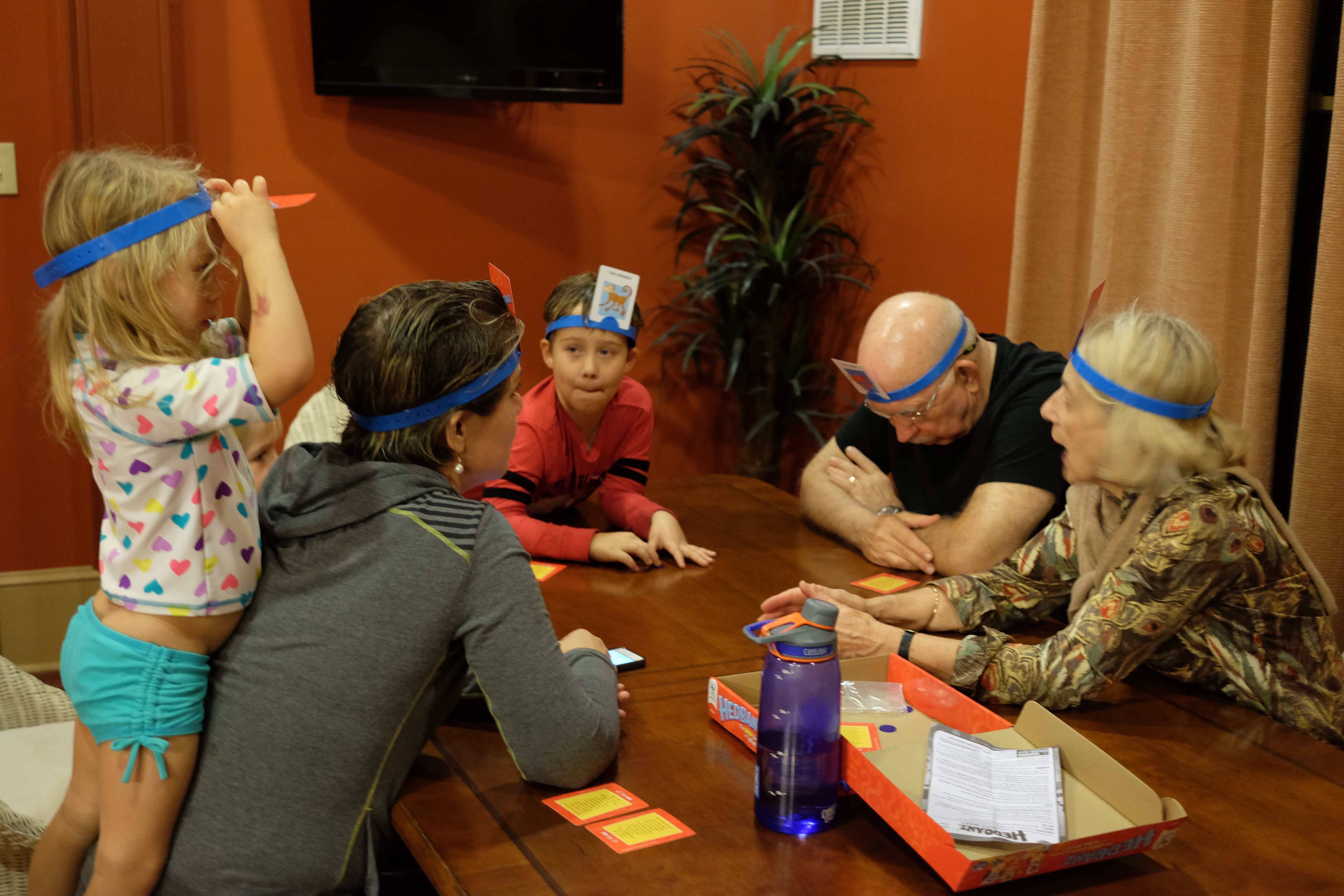In the 1942 film Casablanca, we see how a game can become life or death. A newlywed couple from Bulgaria is fleeing the Nazis for the United States. The young wife Annina is forced to trade sexual favors with the police chief in exchange for visas. In hopeless desperation, she asks the casino owner, Rick if she should take the offer and if her husband will ever forgive her. She tells Rick that her husband Jan has lost what little money they had left playing roulette in an attempt to raise money. Rick rudely tells her to “return to Bulgaria” and that “Everybody in Casablanca has problems.” He then goes to her husband who is sitting hopelessly at the Roulette table with almost no chips left and asks him, “Have you tried 22 tonight?” He then repeats loud enough for the croupier to hear “I said 22.” Jan puts his last few chips on 22, which wins. Rick then tells Jan to, “Leave it there,” and 22 wins again. Rick then abruptly tells Jan, “Cash it in and don’t come back.”
This scene implies that the game was rigged. Through deception a game of chance was manipulated to an outcome of the operator’s choosing. In the case of Jan and Annina, the game was life or death. While the scene highlights an extreme example of deception play in one of the darkest parts of twentieth century history, it underscores how high stakes games can be. Knowing if a game is rigged or not can be crucial to survival.
The Nazi party no longer has control over Europe, but recent events show a global rise in far right and fascist ideology. With the rise of this ideology, we also see games taking a more important role in everyday life. Video games, virtual reality, online worlds, fantasy leagues, game shows, management building games, team building games, games played on a job interviews, highlight the importance of games in today’s world. This paper offers a psychological approach toward understanding deception in games. Using scientific methods, this paper argues that many single player games use deception in single player in a way that violate the player’s pre-established mental models. Therefore, we must understand and define how mental models interact with deception, to really understand the nature of deception in these games.
Taking Games Seriously
Edward Snowden’s leaked National Security Agency’s (NSA) documents, show an extensive government effort to surveil and research gamers. The NSA describes the importance of games, “Games are platforms on which participants may communicate, coordinate, socialize, train, learn, simulate, experiment, build, proselytize.” This shows the broad range of perceived threats that the United States government sees in games.
The NSA leaks show the United States government did quite a bit of research into why games prove to be a useful tool for their enemies. The report states, “Games are an effective influence platform because they promote both ‘active’ and ‘passive’ learning and are highly attractive pursuits for specific target audiences.” One of the reasons that the NSA believes games are an effective tool is that, “[l]earning is central to a player’s in-game success,” and games can encourage a player’s predisposition, “toward a particular cause or message.” Additionally games offer, “passive messaging and conditioning.”
The NSA offers various learning, narrative structures, and other evidence to support why video games can be used to teach someone to become an enemy of the state. The NSA uses the Kurt Squire’s Chainsaw Model of game story to argue that games are made up of tens, hundreds or thousands of mini-narrative arcs that have a player rapidly repeating an arc over and over. The NSA worries that the chainsaw model creates a learning system with gaming that is much more rapid than that of traditional learning. The NSA states that players must often “adopt a specific set of values” to beat a game and that the strong emotions that games evoke can “deepen learning experience.” The NSA is worried that games have a “return for more” factor that makes them addictive in ways that print media is not.

Douglas Maynard and Joanna Herron looked at the “return for more” concept in their analysis of cooperative board games. Cooperative board games are structured similarly to video games. In these games, players compete against the game itself and will often lose many times before winning. They found that people often felt losing was not as bad as they assumed, with most preferring to lose about 70-79% of the time. This shows just how enjoyable games can be even if the player loses. Despite a frustrating structure, players will frequently return to games with a steep difficulty curve because they enjoy the challenge.
While the United States government shows the importance of games on a macro-level, anecdotally we can see the importance of games on a micro-level. Being good or bad at blackjack can mean vast differences in monetary gain. Some companies even use games as part of a job screening process. Most of these micro-level games are single player games.
We must understand the consequences of deception if we are to engage in political discourse today. The widespread use of the term “fake news” in describing trusted journalism sources and the use of “pseudoscience” to describe scholarly findings, has unfortunately encouraged many to questing what is real and what is fake. Because our culture takes games seriously, we must work to better understand how and when they are deceptive.
Contextualizing Deception in Multiplayer and Single Player Games.
Deception is a comprehensive concept that operates differently in different types of games. While there are limitless types of games with deception, they can be broadly broken into two categories single player and multiplayer. The reason for dividing the games into these two broad categories is a shift in intention. In multi-player games, the purpose of deception is to fool your opponents through trickery and deceit. If a player deceives others in a way that is against the spirit of the rules it is cheating. In single player games, only the game operator can deceive. The intention of deception in a single player game is not to win (as an object or game operator cannot win), but to make the player lose the game. In single player games deception is rarely noticed as opposed to multi-player games where the other players eventually discover it.

Games such as Mafia (1986) are almost entirely made up of deception. Mafia was born near the end of the Cold War when a young Soviet psychology student created the game as a teaching tool. In Mafia players must try to use as much deception as possible to show that they are not the mafia. In this game, deception is the whole game. The rules stipulate limits to the amount and kind of deception that players can use. If a person is chosen to be part of the mafia and does not reveal it after the game is over, they are cheating.
Multiplayer games like football are not centered on deception but do have “trick plays” since the game’s strategy can involve tricking or deceiving the other team. In games like football, the deception is evident by the time the play is over. The deception lasts a fraction of a second to maybe twenty seconds in the most successful contingencies. These plays cannot be used multiple times in a row since the other team would catch on to the deception and use strategies to combat it.
Poker players rely on deception to convince other players that they have or do not have cards. Like all multiplayer games, the deception is revealed to all of the players by the end of the game. All the players must show their hand in poker at the end of every play.
A single player or “solo” game is a game with only one player. This is a popular genre of board game, Gloomhaven (2017) and Mage Knight (2010) being two recent examples. The genre isn’t new however, card games like Solitaire and basketball games such as Around the World are also examples of single player games. There are also single player games that are overseen by a game operator who is supposed to be a neutral party. Games like Roulette, where Jan won by playing 22 in Casablanca, was not against the croupier but rather against the odds. The operator is not trying to win or lose in a single player game, instead they work to administer the game. A contestant on a game show is not playing against the host, the host is there to merely make the game more interesting and to make sure the rules are being followed.
Single player games come in three variations, skill, chance and a mixture of skill and chance. Deception can only occur if there is a separate operator or game creator since you cannot deceive yourself. This lack of ability to deceive yourself is why you cannot play most multiplayer games alone. Playing Poker, Chess or Mafia against yourself would be pointless since the element in which the game hinges on, deception, has been removed. Why not play online with other players instead, right? Check out: https://www.sbobet-thai.com/reviews/bet365/.

The basketball game Around the World is an example of a single player game of skill. A player must get the ball in the basket from various points around the court. There should be no deception in this type of game. Only if someone were to modify the ball or basket and not tell the shooter would there be deception. It would be impossible for the player to use deception against the basket. Not shooting from the correct spot or using a non-basketball ball would be considered cheating.
Games like the solo version of the card game War is an example of a chance-based game. The player has a 50 percent chance of having better cards than the dealer, and the outcome of the game is determined in the shuffle of the cards. There is no skill that will improve a player’s chance. Deception in games of chance is always cheating. The Roulette wheel in Casablanca showed that the house was cheating. Games of chance such as slot machines are heavily regulated to ensure that they are pure chance.
Solitaire is an example of a solo game with some chance and some skill. A game might be dealt that is impossible to win, or can only be won using a specific strategy. Here, being good at solitaire will increase the amount a player wins. Like other single player games there can be no deception in Solitare. A card dealer should not try to deceive the player and any form of deception on the part of the player would either not help them win or be cheating.
When looking at the amount of deception in single player games, many of the games by law have no deception. While Rick was the hero in Casablanca, a deceptive Roulette wheel in almost all countries would land Rick in prison. Casinos are so closely monitored by the state that casinos cannot deviate from the statistical odds. Game shows are also so tightly regulated that the game cannot be manipulated to make the player lose. While this is true for many games that involve money, there are still a large number of single player games that involve deception.
Deception
Player intention is a common theme in all definitions of deception. Willian Robinson defines a ruse in a game as an “intentional act, which communicates something about the game-state in order to induce an opponent to worsen her position.” This is similar to Victoria L. Rubin’s definition, which positions deception as, “a message knowingly and intentionally transmitted by a sender to foster a false belief or conclusion by the perceiver.” As humans we often struggle to detect deception. Deception play could be anything from lying, to joking, to concealment, or even role-playing. Burgoon and Buller distinguish three different types of deception: (1) Falsification (lying); (2) Concealment (omitting facts); and (3) Equivocation (changing or avoiding the subject).
Many solo games employ falsification and concealment, without much equivocation. While a player might ask the operator detailed questions, which could lead to equivocation on the part of the operator, this is a separate communicative act from the game because the operator is not playing the game.

To understand falsification or concealment, we must first grasp our understanding of truth. Since single player analog games usually involve physics (knocking over a can; bouncing a ball, shuffling cards) or mechanical engineering (shooting a gun; spinning a wheel) we must look at how our brains process these concepts in our everyday world when there is no falsification or concealment. It seems as though, we process what we perceive as the truth about physics or mechanical engineering of everyday objects through the creation of mental models.
Mental Models
Mental models are cognitive structures in which we base our understanding of how something works in the external world. For example, people establish mental models for things how things like elevators, cars and planes work. When a person comes to an elevator they have not used before, they will recall their mental model of an elevator in order to operate the new elevator and will press the button, wait for the doors to open, and, once inside, select their desired floor. A person would also use this mental model if something seemed different about the elevator, such as if they saw smoke or heard loud sounds because their pre-established mental model informs them that elevators are smoke-free and quiet. The same person might think nothing unusual about getting on an airplane with smoke and a loud engine since they would have a mental model that would inform them that smoke coming out the back of a loud airplane engine is normal.
According to researchers Boyan, Andy, and Sherry as well as Cao, Yan and McGill mental models offer a theoretical explanation for the process through which a game player constructs the rules and strategies of a game. When a player steps up to a basketball hoop they are recalling a mental model of how a basketball goes into the hoop. If the basketball hoop is a different size, height, or shape compared to a standard basketball hoop, this player will use a mental model to pick a strategy that usually won’t work. This is where the deception of the game exists.

Using a mental model framework, we can create a useful definition of deception for single player games. It is the violation of the player’s pre-established mental models that creates the deception. Many single-player games involve activating established mental models, such as throwing a ball, shuffling cards, rolling a ball, shooting a gun, or climbing a ladder. Using a person’s pre-established mental model to win at games that have deception will usually end in failure since the game is based on a player’s inability to alter a strategy that was developed with their established mental model. We can, therefore, define deception in single player games as: A game that uses falsification or concealment to alter a game’s winning strategy from the winning strategy that exists in the preestablished mental model of the player.
Mental models have a long history in game studies such as mental models of violence to enjoyment and frustration in games to realism, immersion and even video game controllers in a construct known as controller naturalness. Although some have critiqued the essentializing aspects of mental models in game studies, I nonetheless feel it is important to consider deception through a mental models approach because these critiques often continue to advocate for the positive impacts of games while dismissing the negative. Games do not cause violence, but they do facilitate learning is a common paradox in serious games literature. These critiques often debunk an early transmission model communication approach to media audiences, not the more nuanced work of mental models today. Furthermore, while Mental Models have an established history in game studies, I could not find any studies that focus on deception that are grounded in mental models. This could be due to the lack of a scientific definition of deception in games or the complexities of looking at deception in mutiplayer and single player games.
Mental Models of Single Player Deception Games
Single player games with deception are plentiful. This section considers how the mental models of some single player games with deception work. While there are too many games to go through an extensive list, I attempted to feature a variety of different types of analog games as a first step toward understanding the scope of mental models in this area.
Basketball that uses nonstandard hoops and balls is one of the most popular games that use deception. People that have played basketball even recreationally will have shot hundreds or thousands of shots and will have a clear expectation of how the ball should bounce, interact with the backboard, and go in the hoop. By adjusting the height or shape of the hoop as well as the air pressure of the ball, an experienced basketball player will use a strategy to win that works on regulation hoops but not in the game. This is what makes basketball games at amusement parks so profitable; the people who are most likely going to play are people with a clear mental model of how a basketball should go into a hoop. This mental model will hurt their ability to adjust their strategy to win the game. This can be seen in the 2010 YouTube video where LeBron James (arguably one of the best basketball players ever) is not able to sink a single shot at a basketball game at the amusement park Cedar Point. LeBron James has such a strong mental model of how to shoot a basketball that when there was deception with a different size or height of the hoop, he is unable to adjust to win the game.
Not all basketball games at amusement parks involve deception; many also have a game like Three-Point Shootout or HORSE that use regulation hoops and balls. LeBron James played one of these at Cedar Point on the same day that the previous YouTube video was shot and he was able to make at least three of the four shots that were caught on camera. Since there was no deception, it is a pure test of skill—which someone like LeBron James had plenty of. While this seems like common sense we can see the drastically different reactions from the crowd on the same day at the same amusement park. The crowd boos and mocks James when he is unable to make the basket in the game with deception and cheers when he is able to make the baskets in the game with no deception. It intrigued me that neither the bystanders nor LeBron James seemed to understand how deception was involved here. If he had realized the deception, would have still played with such a large crowd watching?
Climb the Ladder is a folk game that deceives people who assume that their ability to climb a ladder will help them win. While traditional ladders connect at four points (two at the top and two at the bottom), the game ladder connects only at two points (one at the top and one at the bottom). This creates a game state where if the player relies on their mental model of how to climb a ladder they will lose. Using the rungs or steps on a ladder will result in an almost certain loss whereas using mainly the outside ropes will give a player a better chance of winning, this is the opposite of a traditional ladder where the climber uses only the rungs or steps. Again, the players of this game rarely realize how their mental models have informed their strategy.
A management game that is one of the most popular at corporate retreats is the Magic Cane or Helium Stick game and it involves deception. The game is often used to gauge how good of a leader someone has the potential to be. While it would be inaccurate to say that this game makes or breaks someone’s career, it does have the potential to make someone look great or silly in the eyes of upper management. This game involves many people but is essentially a solo game. In this game a single person is chosen to be the leader. Then a group of people sometimes as large as forty or fifty people will hold a single rod with their index finger. If the leader can give the team directions to lower the rod onto the floor, the leader wins, if not the leader loses. The reason that it is essentially a single player game is that the team has no say in the strategy, as the other players stand in as game mechanics more than they do players. Also if the leader loses, the team does not win just as if a Solitaire player loses, the cards do not win.
In this game, the deception revolves around the pre-established mental model of a group of people lowering something to the ground. The mental model involves a heavy object since a large group of people would never carry a very light object. This mental model plays havoc when the group has trouble not lifting the object up and usually the game ends when the team is unable to break their mental model and not physically lift. If the leader realizes that the game uses this mental model they can instruct the team to be totally still and notlift up or down. Then they can give directions to all lower an inch at a time with pauses in between. When carrying a heavy object a group never has the luxury of notlifting so they don’t realize why the rod is going up. Only a leader who understands the deception at play here between these two mental models that involve lifting will win the game. Telling everyone to “just lower” the stick without breaking the mental model will end with the stick rising and the leader losing the game.
Mental models are at play in all of these examples. Helium Stick interests me because of how incredibly simple and yet incredibly hard it is. It is also a game where the leader must understand how deception works (the fingers holding up the stick has more pressure than the gravity pushing it down) and verbally explain it to the team. A leader who does not understand will just yell, “lower it” and the stick will rise higher. The leader here must both understanding how mental models are challenged and also explain it. In other games such as basketball and Climb the Ladder, a player can understand how the mental models are challenged without verbalizing it. Understanding how single player games implement deception may help us to better understand how players deal with it. Just as the Helium Stick is meant to teach leaders how to deal with the deception of conflicting mental models, it might help researchers to understand how people deal with this dissonance as well. The single player game gives a great chance to study deception in a laboratory that is free of confounding variables.
Conclusion
To understand when deception is present in single-player games this paper has considered a mental models approach taken from cognitive psychology. To understand how a person is being deceived, we must first understand how their brain assumes the game to work, which is through pre-established mental models. If the game has altered the physics that exist in the player’s mental model, then the game contains deception and the strategy that the player assumes will work will probably not be successful.
I argue here for the importance of games in our everyday lives and why solo games must be studied. The NSA leaks show how seriously the US government takes games, and as I have noted earlier, one’s aptitude in games can even mean the difference between getting a job or not.
It is the aim of this paper to advocate for a mental models approach toward understanding how single player games deceive. The nature of deception in games fundamentally changes between multiplayer and single player games. Future research on deception in games should address this difference and focus on one or the other. By being able to better understand how a player deals with deception in a solo game that is performed in a laboratory setting, we might better understand how people manage deception outside of game spaces.
–
Featured image by Ralf Steinberger @Flickr CC BY.
–
Nathan Cutietta fell in love with filmmaking as a child after watching Vladimir Shevchenko’s documentary Chernobyl: A Chronicle of Difficult Weeks. While in high school Nathan started a television apprentice under video producer Dan Maglione. Nathan’s professional television career started at 15 in Tucson, Arizona as an editor at Jorgensen Productions, and later at Tucson’s Warner Brother’s Affiliate as a producer. He moved to Los Angeles in 2001 and worked as a Director and Producer for Fox, Fox Sports, Disney, and PBS. He is best known for his television series Lost Legends of the West, a 13-episode folk history of the American West that was nominated for two Emmy Awards. He also directed and produced the documentaries Welcome Back Riders, and Eleonore Schoenfeld: Born to Teach. Nathan is currently the Director of the Media and Communication Center at Heidelberg University where he teaches television and video game production classes. He is also a doctoral student at Bowling Green State University where he studies Media Psychology with a focus on narrative comprehension of video games under Rick Busselle. Nathan lives with his wife Margarita and daughters Emma and Anastasia in the small beach community of Huron, OH.

